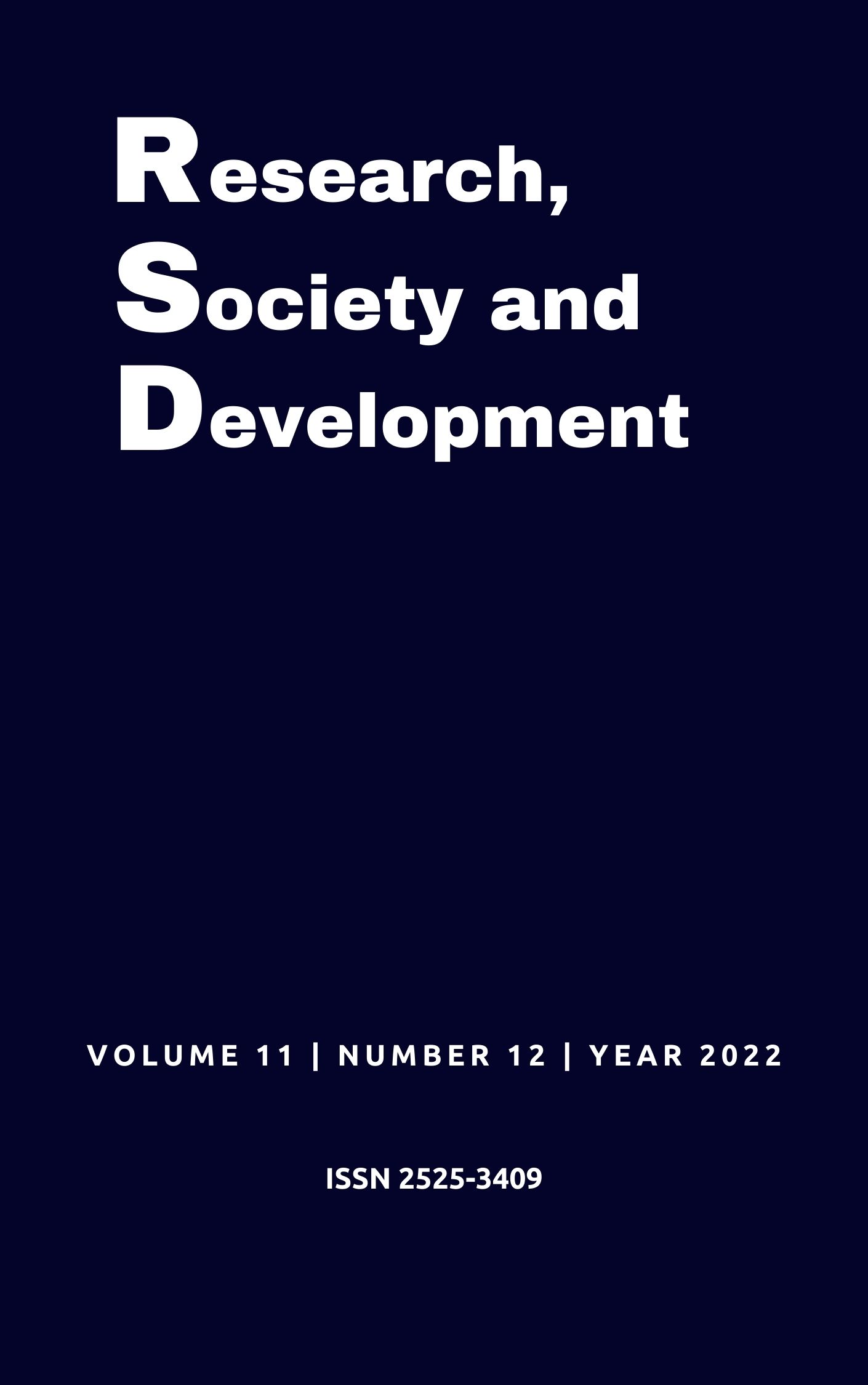Telework before and during the COVID-19 pandemic: an evaluation of the perception of the public servants of the Court of Justice of the State of Goiás
DOI:
https://doi.org/10.33448/rsd-v11i12.34365Keywords:
Telework, Public Organization Pandemic, TJGO.Abstract
The present research aimed to assess the worker’s perception of the Court of Justice of the State of Goiás (TJGO) regarding the impacts and challenges of teleworking before and after the COVID-19 pandemic. It was a descriptive, exploratory study with a quantitative-qualitative approach based on an unpublished study in the TJGO. The results were described according to the following categories of analysis: sociodemographic profile and analysis of employees' perceptions of the impacts of teleworking, before and after the pandemic. The results showed that in relation to the age of the servers, they are mostly between 41 and 46 years old. The gender of the interviewees is mostly female. Regarding the role of civil servants, 62.8% are judicial analysts; and 16.7% are court clerks. In the second category, which was the analysis of the worker’s perception of the impacts of teleworking before and after the pandemic, it was noted in the perception of the research subjects if they had already worked in the telework format before the pandemic and 96.2% replied no. 98.7% responded that even before the pandemic, they never asked the TJGO to work in telework. Regarding the teleworking routine, 42.3% of the servers stated they had no difficulty establishing a routine. Of those interviewed, 43.6% fully agree with the quality of the Information and Communication Technology (ICT) available. The service time to the user remotely, in the view of the servers, is satisfactory, in the proportion of 46.2% of the participants who agreed.
References
Abbad, G. D. S., Legentil, J., Damascena, M., Miranda, L., Feital, C., & Neiva, E. R. (2019). Percepções de teletrabalhadores e trabalhadores presenciais sobre desenho do trabalho. Revista Psicologia Organizações e Trabalho, 19(4), 772-780.
Almeida, E. L. F. D., Oliveira, P. V. D., & Losekann, L. (2015). Impactos da contenção dos preços de combustíveis no Brasil e opções de mecanismos de precificação. Brazilian Journal of Political Economy, 35, 531-556.
Araújo, A. M. C. (2007). Trabalho, precarização e relações de gênero. In: VIII Congresso Brasileiro de Sociologia. Recife.
Australian Bureau of Statistics (2020). Business Impacts of COVID-19, setembro de 2020. https://www.abs.gov.au/statistics/economy/business-indicators/business-conditions-and-sentiments/sep -2020.
Brasil. (2006). Lei nº 11.419, de 19 de dezembro de 2006. Dispõe sobre a informatização do processo judicial; altera a Lei nº 5.869, de 11 de janeiro de 1973 – Código de Processo Civil; e dá outras providências.
Brasil. [Constituição (1988)]. Constituição da República Federativa do Brasil de 1988. Brasília, DF: Presidência da República, 2021. http://www.planalto.gov.br/ccivil_03/Constituicao/Constituiçao.htm.
Carvalho, R. M. V., & Barreirinhas, A. L. (2007). Teletrabalho: O trabalho na era digital.
Clementino, E. B. (2005). Processo judicial eletrônico: Juruá.
Conselho Nacional de Justiça (2020). Justiça em Números 2020: ano-base 2019/Conselho Nacional de Justiça - Brasília: CNJ, 2020. https://www.cnj.jus.br/wp-content/uploads/2020/08/WEB-V3-Justi%C3%A7a-em-N%C3%BAmeros-2020-atualizado-em-25-08-2020.pdf
Dingel, J., & Neiman, B. (2020). Quantos trabalhos podem ser feitos em casa? https://github.com/jdingel/DingelNeimanworkathome/blob/master/DingelNeiman-workathome.pdf.
Faria, J. L. F. (2020). Desenho do Teletrabalho: percepções e práticas.
Ferreira Júnior, J. C. (2000). Telecommuting: o paradigma de um novo estilo de trabalho. Revista de Administração de Empresas, 40, 8-17.
Ker, D., Montagnier, P., & Spiezia, V. (2021). Measuring telework in the COVID-19 pandemic. Digital Economy Papers, No. 314, OECD Publishing, Paris. https://doi .org/10.1787/0a76109f-en.
Nilles, J. M. (1994). Making telecommuting happen: A guide for telemanagers and telecommuters.
OCDE. (2020). Ganhos de produtividade do teletrabalho na era pós COVID-19: como as políticas públicas podem fazer acontecer? OECD Publishing, Paris. http://www.oecd.org/coronavirus/policy-responses/productivity-gains-from-teleworking-in-the-post-covid-19-era-how-can-public-policys- faça acontecer-a5d52e99/.
OCDE. (2021). Teletrabalho na pandemia de COVID-19: tendências e perspectivas. https://www.oecd.org/coronavirus/policy-responses/teleworking-in-the-covid-19-pandemic-trends-and-prospects-72a416b6/
Parker, S. K. (2014). Beyond motivation: Job and work design for development, health, ambidexterity, and more. Annual Review of Psychology, 65, 661-691.
Rafalski, J. C., & Andrade, A. L. (2015). Home-office: aspectos exploratórios do trabalho a partir de casa. Temas em Psicologia, 23(2), 431-441.
Santos, A. K. M. O avanço do teletrabalho no Brasil. Universidade Federal de Uberlândia, 2021. https://repositorio.ufu.br/bitstream/123456789/33348/4/Avan%C3%A7oTeletrabalhoBrasil.pdf
Sátiro, R. M., & Sousa, M. D. M. (2021). Determinantes Quantitativos Do Desempenho Judicial: Fatores Associados À Produtividade Dos Tribunais De Justiça. Revista Direito GV, 17.
Silva, M. O., de Souza, L. V., & Bastos, M. H. R. (2019). Bibliometria: análise quantitativa da produção científica sobre o teletrabalho e suas contribuições para o desenvolvimento regional brasileiro. Revista Saber Digital, 12(2), 1-16.
Downloads
Published
Issue
Section
License
Copyright (c) 2022 Kenedy Augusto Batista Pereira Mendes; Alcido Elenor Wander

This work is licensed under a Creative Commons Attribution 4.0 International License.
Authors who publish with this journal agree to the following terms:
1) Authors retain copyright and grant the journal right of first publication with the work simultaneously licensed under a Creative Commons Attribution License that allows others to share the work with an acknowledgement of the work's authorship and initial publication in this journal.
2) Authors are able to enter into separate, additional contractual arrangements for the non-exclusive distribution of the journal's published version of the work (e.g., post it to an institutional repository or publish it in a book), with an acknowledgement of its initial publication in this journal.
3) Authors are permitted and encouraged to post their work online (e.g., in institutional repositories or on their website) prior to and during the submission process, as it can lead to productive exchanges, as well as earlier and greater citation of published work.


